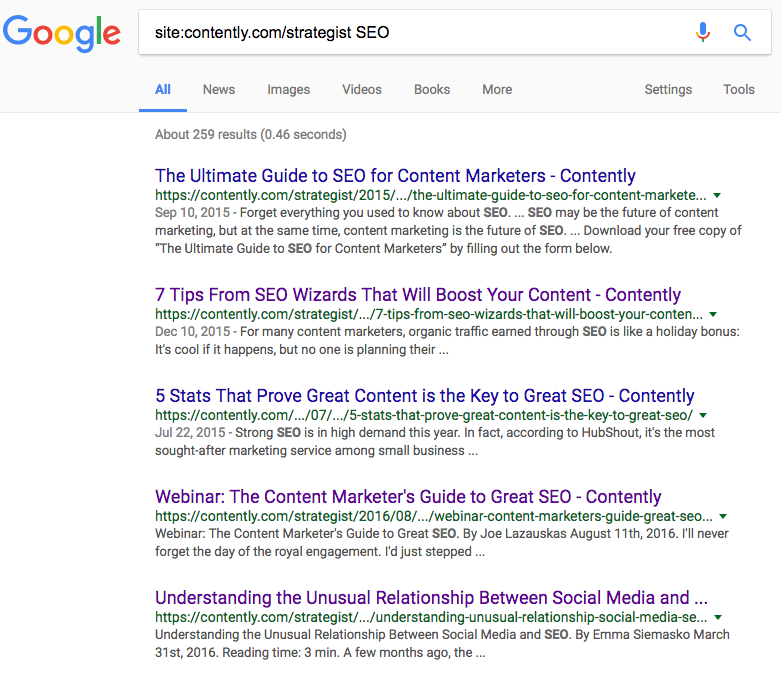Voices
Connecting the Dots: How to Raise Your Search Rankings With Internal Linking
Imagine you’re playing soccer. You’ve trained for years, now finally at the peak of your powers as you confidently march toward the title. Then, with the score tied in the championship, the ball falls to you just yards from the goal. But instead of knocking it in to rapturous applause, you scuff your opportunity, doomed to watch your biggest competitor take all the spoils for itself.
To me, that scenario is the best way to describe what happens when a brand does all the right things creating a valuable blog post but then ignores internal linking. It’s like whiffing on an open goal with the game on the line.

You may write the most imaginative, persuasive, captivating copy, and regularly produce insightful, enjoyable, valuable content for your audience, but if you neglect to build internal links, you’re hurting your business. Not only can internal links direct people who visit your site to other relevant material, but they also boost your SEO potential.
To capitalize on the work you’re already putting in, here’s how marketers can get the most out of their links.
Navigation stations
Most marketers have some understanding of SEO basics. You want to own unique keywords important to your business. You don’t want headlines to be too short or too long. Images, video, and other visual assets help.
Since search engine bots constantly crawl your sites to gauge which pages are most important, linking to them in a strategic way is another way to boost your search rankings. Doing so leads to a better customer journey, encouraging people to spend more time on your site, and hopefully, click to learn more about your company’s services.
If visitors get enough value out of your site to click on other links, your bounce rate will drop significantly. In turn, this will enhance the overall authority of your website in the eyes of search engine bots, which increases your chances of ranking higher on search engine results pages (SERPs).
Talking of bots, they need to crawl every aspect of your website in order to index your content. If there are isolated pages that aren’t linked anywhere else, they’ll have no way of knowing it exists, no matter how wonderful the writing.
In its guide to internal links, Moz visualizes the perfect website architecture, with the blue dot at the top representing the homepage:

Having a clear interlinking structure ensures search engines can read and understand your website, with each link acting as a signpost, pointing them in the direction of important content. The more ‘signs’ you have pointing to relevant material, the clearer you make the pathway and the greater probability you have of getting noticed by potential customers. The more you publish, the trickier this gets since you’ll probably end up writing about the same core topics and keywords, making a consistent strategy all the more important.
The aim of the game is to ensure your most important web pages have the highest number of internal links pointing in their direction, and you can also check for and prevent broken links (a negative ranking factor that also disrupts user experience). If you’re looking for some insight into the signals you’re sending bots, you can create an Internal Links Report using Google’s Search Console.
Pointing in the right direction
When planning a new blog post or refining copy on your service pages, it’s extremely beneficial to conduct a quick audit to see where you can naturally link to other material. I’m a fan of the “site:” search operator in Google, and regularly employ this tactic when working on my own company’s site.
Since we’re talking about SEO advice for content marketers in this article, I thought it would make sense to look at other relevant material on The Content Strategist. If you type “site: contently.com/strategist SEO” into Google, the results bring up more than 250 related pages:

Armed with this knowledge, we now know that The Ultimate Guide to SEO for Content Marketers is the highest-ranking resource, which works out well since it’s an e-book packed with actionable advice. [Editor’s note: Albeit one that could use a facelift since it’s a little dated.] This makes it a natural, valuable internal link that hopefully benefits readers while also reaffirming the page’s prominence in the eyes of Google, laying down another signpost. Contently would be wise to link to the guide in other posts related to SEO.
It’s also wise to bear keywords in mind when forming anchor text (the words used in your hyperlinks) because there’s much SEO value to be gained there. Good anchor text should be descriptive in nature and highly relevant to the target page. “Click here,” for instance, doesn’t carry nearly as much weight as how to form an effective content marketing strategy. The former doesn’t give much of a clue as to the content, while the longer link contains the phrase “content marketing strategy”—a clear signal that increases the likelihood of the target page ranking well.
So if you’re already focused on creating smart, engaging articles, you’re on the right path. But it’s important to remember that’s just the first step to success. Once your content is ready, then it’s time to link it all together to really achieve your SEO goals.

Get better at your job right now.
Read our monthly newsletter to master content marketing. It’s made for marketers, creators, and everyone in between.




